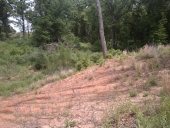
 2
2




My goal? To create a wildlife habitat on our surburban (almost rural) property using mostly California native plants and inspire others to do the same.
Also to learn how to grow some edibles - more than the herbs I have grown before.




My goal? To create a wildlife habitat on our surburban (almost rural) property using mostly California native plants and inspire others to do the same.
Also to learn how to grow some edibles - more than the herbs I have grown before.
 1
1








My goal? To create a wildlife habitat on our surburban (almost rural) property using mostly California native plants and inspire others to do the same.
Also to learn how to grow some edibles - more than the herbs I have grown before.
 1
1




 I have the same kind of fun here.
I have the same kind of fun here.
 1
1




 1
1





My goal? To create a wildlife habitat on our surburban (almost rural) property using mostly California native plants and inspire others to do the same.
Also to learn how to grow some edibles - more than the herbs I have grown before.
 1
1









My goal? To create a wildlife habitat on our surburban (almost rural) property using mostly California native plants and inspire others to do the same.
Also to learn how to grow some edibles - more than the herbs I have grown before.
 2
2




 Keep us posted!
Keep us posted!
 4
4




- Tim's Homestead Journal - Purchase a copy of Building a Better World in Your Backyard - Purchase 6 Decks of Permaculture Cards -
- Purchase 12x Decks of Permaculture Cards - Purchase a copy of the SKIP Book - Purchase 12x copies of Building a Better World in your Backyard

|
Mrs. Robinson, you're trying to seduce me. Aren't you? Give us some privacy tiny ad.
12 DVDs bundle
https://permies.com/wiki/269050/DVDs-bundle
|


